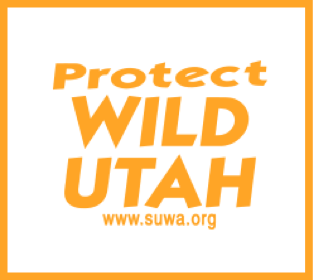|
Southern Utah Wilderness Alliance * Sierra Club * The Wilderness Society * Natural Resources Defense Council * Public Employees for Environmental Responsibility/Rangers for Responsible Recreation Contacts:
WASHINGTON D.C. (October 30, 2007) Today, ninety-three members of the House of Representatives sent an urgent letter to Secretary of the Interior Dirk Kempthorne requesting that he protect Utah’s irreplaceable archaeological artifacts and magnificent roadless areas from the damage caused by off-road vehicles. The congressional appeal comes at a critical juncture as DOI’s Bureau of Land Management (BLM) is rushing to finalize its proposed off-road vehicle travel plans, covering 11 million acres of Utah’s public land, by mid-2008. Travel plan decisions made in Utah could set the tone for off-road vehicle plans across the West.
“This vast treasure of archeological resources must be given the strongest protections we can provide,” said Congressman Timothy V. Johnson (R-IL). “This land is not just part of our American heritage, but mankind’s heritage. Once spoiled, it is lost forever. I appeal to my colleagues, Interior Secretary Kempthorne, as well as the general public to take the appropriate actions to prevent this land from exploitation.” The BLM is currently drafting much-delayed off-road vehicle travel plans. Federal law requires the agency to protect natural and cultural resources as it develops these plans, yet the Utah BLM is proposing hundreds of miles of off-road vehicle routes in the same areas the agency found to be “roadless” in its most recent inventory including sinuous canyons, desert streams lined with cottonwood galleries, high forested mesas, towering buttes, variegated badlands, and undulating slickrock expanses. These travel plans will change the remote and undeveloped nature of these roadless lands, which have until now provided safe harbor for prehistoric cultural artifacts dating from mammoth hunter times to the present, such as mystical rock art, rock shelters, hunting points, tools, and pottery. Professional archaeologists broadly agree that cultural resources are at much greater risk of vandalism, looting, and unintentional damages when located near roads and off-road vehicle routes. Looting is fueled by the illegal -- although lucrative market in these artifacts. Although BLM has been working on these off-road vehicle travel plans for nearly six years, the agency has not conducted comprehensive archaeological surveys of the areas in which off-road vehicle routes are proposed, including areas that are known to have cultural resources. As a result, the agency is acting blindly and recklessly and putting the nation’s cultural heritage at risk. “We should do more to protect key habitats from the damage caused by off-road vehicles,” Congressman Mark Kirk (R-IL) said. “The Bureau of Land Management must help to protect critical ecosystems and the archeological heritage of our country.” The congressional letter comes at a pivotal time in BLM’s travel planning process, as the agency has announced its goal is to finalize the travel plans in 2008. The long-term consequences of these travel plans cannot be overstated, as they will govern off-road vehicle use in Utah’s redrock country for the next 15-20 years, and Congressional members are concerned that flawed travel plans in Utah could serve as models for off-road vehicle travel plans in other western states. Congressman Hinchey notes, “If the BLM allows off-road vehicle routes in these inventoried roadless areas then it all of a sudden becomes a slippery slope situation across the country in which the Interior Department uses Utah as a precedent to systematically open up roadless areas to off-road vehicles. I strongly urge Secretary Kempthorne to act quickly and firmly to protect these millions of acres in Utah." ###
|
|
|
|||||

 Southern Utah Wilderness Alliance
Southern Utah Wilderness Alliance
Protecting Utah's Redrock Country


